WEEKLY RECTOR’S MESSAGE – April 19th – Fr. Thomas
We know by now that New York state leads the country in the number of deaths due to COVID-19. Apparently, though, there are not enough burial plots for the recently increased number of victims, so corpses are being “stockpiled.” This situation reminds me of a town in France where, decades ago, a similar outbreak occurred forcing the mayor to issue a law forbidding anyone who lived in that town to die.
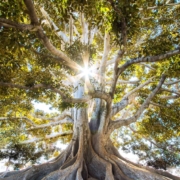 Well, sadly, we don’t have that option, regardless of the municipality we live in. However, the Good News is that we have a home in heaven waiting for us! Some may have to wait longer than others to reach their final destination, but imagine the joy and celebration in heaven when we do. If death came into the world through the first act of disobedience with Adam and Eve taking fruit from the tree, everlasting life with God came by Jesus’ death on a tree. This is Good News every day, every week, month, and year because Easter is not merely one day or season, but a way of life. Thanks be to God who gives us the victory because there’s plenty of room in heaven for all who believe and walk down that road that leads to eternal life. Alleluia, Alleluia, Alleluia!
Well, sadly, we don’t have that option, regardless of the municipality we live in. However, the Good News is that we have a home in heaven waiting for us! Some may have to wait longer than others to reach their final destination, but imagine the joy and celebration in heaven when we do. If death came into the world through the first act of disobedience with Adam and Eve taking fruit from the tree, everlasting life with God came by Jesus’ death on a tree. This is Good News every day, every week, month, and year because Easter is not merely one day or season, but a way of life. Thanks be to God who gives us the victory because there’s plenty of room in heaven for all who believe and walk down that road that leads to eternal life. Alleluia, Alleluia, Alleluia!
NOTICES for this week
- View – Sunday mass– a video will be posted on the church’s website, Facebook via our YouTube channel. Don’t forget to subscribe free so that we will in the future be able to retain our site.
- Urgent Message– Please continue to pray for an end to the COVID-19 virus and its victims and thank you for your continued financial support (check, automated bank transfers or electronic donations via www.myeoffering.com to the life and witness our congregation in this community. As a reminder, the music ministry continues, outreach is still feeding the homeless, Some of us have already received the government’s stimulus checks, or discounts on various utilities or insurances, or simple savings of not going out to eat so often. We also have the ability to pray for others, donate blood, and particularly lessen the load on our medical resources by staying home and taking care of each other via phone calls; you never know who else needs to hear a friendly voice.
- In case of a pastoral emergency, you can leave a message on our voice mail, and we will respond as quickly as possible.
- Please Pray – For the sick: Carole, Patti, Sandy, Kim, Joe, Steve, Bob, Linda, Francine, Timone, Donna, Ashlyn, Robin. For birthday celebrations: Emma Torres, Michelle Gardner, Erin Thomas, Assad Thompson, Patricia Burke, Kathleen Lannaman, Blake Wolliston, Phyllis Gibbs-Thomas. For those celebrating a wedding anniversary: Rudy & Pat Bernard, Victor & Jeanne Champagne, Howard & Karen Brown, Daryl & Shelby Walcher. For our expectant mothers: Dani and Andrea. For the faithful departed: The Rev. Harvey Klein.
Lord Jesus Christ, Son of the Living God, Physician of the body and soul, You restored sight to the blind, healed the lame and cured those with leprosy. Grant, we beseech You, the necessary knowledge and perseverance to all who are working on a vaccine to quickly end the spread of COVID-19. Have mercy on those who have died, and grant comfort to all who are affected in any way and those who are living in apprehension. Give us the grace each day to trust in You and Your loving mercy. We ask this in the name of the Father, the Son and the Holy Spirit. Amen.
https://www.facebook.com/SaintDavidsInThePines/
Second Sunday of Easter – 4/19/20- Peace Be With You.
Acts 2:14a, 22-32 This is part of the first Christian sermon of which we have any record. Peter delivered it on the streets of Jerusalem on the Jewish Feast of Pentecost, which is fifty days after the Feast of the Passover at which Jesus was crucified. Notice that Peter is a brave, bold man in contrast to the fearful fellow who had denied Jesus at the time of his trial. Notice also that he is unshakably convinced that Jesus has risen from the dead.
Psalm 16 This psalm, which is in part set in the form of a prayer, is an affirmation of trust in God. The psalmist sums up his wholehearted commitment to the Lord with the words, “I have set the Lord always before me”” (v.*).
1 Peter 1:3-9 Peter is writing approximately two generations after the crucifixion-resurrection to Christians in a time of persecution; notice how central is his conviction of the Lord’s resurrection.
John 20:19-31 The earliest record of resurrection appearances is in 1 Corinthians 15:3-8. These fall into two categories. The first group (to Peter and others) has a church-founding significance. The second group (to James and others) has a mission-inaugurating significance. The two appearances described in John 20 are in the first category. Jesus binds the disciples together in their conviction of his risen presence. The Holy Spirit is bestowed, and the Church as a spiritual entity begins.
Challenge Questions
- Try to imagine that you are among those gathered behind closed doors on Easter evening. How would you describe the atmosphere in the room? How do you think the disciples might have felt when Jesus suddenly appeared among them? Why do you think he showed them his wounds?
- In John 20:19, 21, and 26, Jesus says, “Peace be with you.” Why do you think he repeats this greeting? What effect do you think these words had on the disciples? How are they important to us today?
- What is the mission that Jesus gives to his followers in verses 21b-23, and how are they empowered for this? How are we as individuals and as the Church to fulfill this mission today? How are we enabled to do so? In particular, what does it mean that we are to forgive and retain sins?
- As you read the exchange between Thomas and Jesus in Verses 24-29, how would you characterize the words and actions of both Thomas and Jesus here? What do you think moves Thomas to declare that Jesus is Lord and God? What do we learn from this passage about doubt, faith, and belief?
- All of the readings for today proclaim the reality and implications of the Resurrection. Read the Epistle for today in 1 Peter 1:3-9 and reflect on your understanding of the implications of the Resurrection in your own life.


 Christ is risen! He has risen indeed!
Christ is risen! He has risen indeed!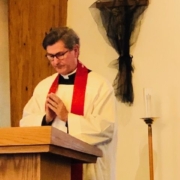
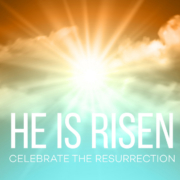
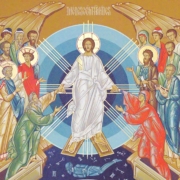
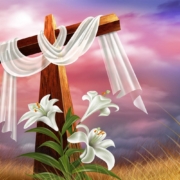
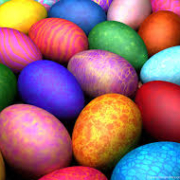
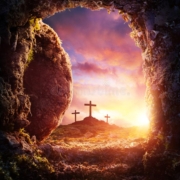 Resurrection of Jesus – The belief that Jesus was raised bodily from the dead by God on the third day after Jesus’ crucifixion and burial, exalting him to the near presence of God in eternal glory. The resurrection of Jesus is at the heart of Christianity (Acts 2:22-36). Christian faith would be meaningless without the resurrection of Jesus (1 Cor 15:14). The reality of Jesus’ resurrection was experienced by chosen witnesses and proclaimed by the early Christian community. Easter is the day of Jesus’ resurrection. Jesus is understood to have been raised on the Sunday following the Friday of his crucifixion. The resurrection is to be distinguished both from resuscitation (restoration to the prior mode of human existence) and the immortality of the soul. Jesus’ resurrection began the transformation and glorification of the whole cosmos, including the redeemed Christian community. Christ was raised as the “first fruits of those who have fallen asleep” (1 Cor 15:20). By Christ’s resurrection, this same new mode of existence is made available to all. The Catechism notes that “By his resurrection, Jesus overcame death and opened for us the way of eternal life” (BCP, p. 850). Jesus’ resurrection is celebrated by Christians at all times, especially at Easter and throughout the Great Fifty Days of the Easter season, and on Sunday, which is the Lord’s Day and the day of resurrection.
Resurrection of Jesus – The belief that Jesus was raised bodily from the dead by God on the third day after Jesus’ crucifixion and burial, exalting him to the near presence of God in eternal glory. The resurrection of Jesus is at the heart of Christianity (Acts 2:22-36). Christian faith would be meaningless without the resurrection of Jesus (1 Cor 15:14). The reality of Jesus’ resurrection was experienced by chosen witnesses and proclaimed by the early Christian community. Easter is the day of Jesus’ resurrection. Jesus is understood to have been raised on the Sunday following the Friday of his crucifixion. The resurrection is to be distinguished both from resuscitation (restoration to the prior mode of human existence) and the immortality of the soul. Jesus’ resurrection began the transformation and glorification of the whole cosmos, including the redeemed Christian community. Christ was raised as the “first fruits of those who have fallen asleep” (1 Cor 15:20). By Christ’s resurrection, this same new mode of existence is made available to all. The Catechism notes that “By his resurrection, Jesus overcame death and opened for us the way of eternal life” (BCP, p. 850). Jesus’ resurrection is celebrated by Christians at all times, especially at Easter and throughout the Great Fifty Days of the Easter season, and on Sunday, which is the Lord’s Day and the day of resurrection.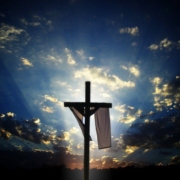 Easter – The feast of Christ’s resurrection. According to Bede, the word derives from the Anglo-Saxon spring goddess Eostre. Christians in England applied the word to the principal festival of the church year, both day and season. 1) Easter Day is the annual feast of the resurrection, the pascha or Christian Passover, and the eighth day of cosmic creation. Faith in Jesus’ resurrection on the Sunday or third day following his crucifixion is at the heart of Christian belief. Easter sets the experience of springtime next to the ancient stories of deliverance and the proclamation of the risen Christ. In the west, Easter occurs on the first Sunday after the full moon on or after the vernal equinox. Easter always falls between Mar. 22 and Apr. 25 inclusive. Following Jewish custom, the feast begins at sunset on Easter Eve with the Great Vigil of Easter. The Eastern Orthodox Church celebrates Easter on the first Sunday after the Jewish pesach or Passover (which follows the spring full moon). Although the two dates sometimes coincide, the eastern date is often one or more weeks later. 2) Easter Season. See Great Fifty Days.
Easter – The feast of Christ’s resurrection. According to Bede, the word derives from the Anglo-Saxon spring goddess Eostre. Christians in England applied the word to the principal festival of the church year, both day and season. 1) Easter Day is the annual feast of the resurrection, the pascha or Christian Passover, and the eighth day of cosmic creation. Faith in Jesus’ resurrection on the Sunday or third day following his crucifixion is at the heart of Christian belief. Easter sets the experience of springtime next to the ancient stories of deliverance and the proclamation of the risen Christ. In the west, Easter occurs on the first Sunday after the full moon on or after the vernal equinox. Easter always falls between Mar. 22 and Apr. 25 inclusive. Following Jewish custom, the feast begins at sunset on Easter Eve with the Great Vigil of Easter. The Eastern Orthodox Church celebrates Easter on the first Sunday after the Jewish pesach or Passover (which follows the spring full moon). Although the two dates sometimes coincide, the eastern date is often one or more weeks later. 2) Easter Season. See Great Fifty Days.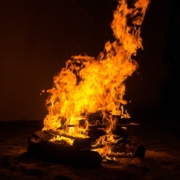
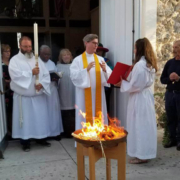 Holy Saturday – The Saturday after Good Friday, which recalls the day when the crucified Christ visited among the dead while his body lay in the tomb of Joseph of Arimathea. In the Episcopal Church there is no eucharist on Holy Saturday. The BCP provides a simple liturgy of the word with collect and readings for the Holy Saturday service. The funeral anthem “In the midst of life” (BCP, pp. 484 or 492) is used instead of the prayers of the people (BCP, p. 283). In the ancient church, those preparing for baptism and perhaps others continued the fast they began on Good Friday. Holy Saturday ends at sunset. Fasting and other preparations end at sunset or with the Easter Vigil, which begins the celebration of Easter. See Triduum; see Easter Vigil.
Holy Saturday – The Saturday after Good Friday, which recalls the day when the crucified Christ visited among the dead while his body lay in the tomb of Joseph of Arimathea. In the Episcopal Church there is no eucharist on Holy Saturday. The BCP provides a simple liturgy of the word with collect and readings for the Holy Saturday service. The funeral anthem “In the midst of life” (BCP, pp. 484 or 492) is used instead of the prayers of the people (BCP, p. 283). In the ancient church, those preparing for baptism and perhaps others continued the fast they began on Good Friday. Holy Saturday ends at sunset. Fasting and other preparations end at sunset or with the Easter Vigil, which begins the celebration of Easter. See Triduum; see Easter Vigil.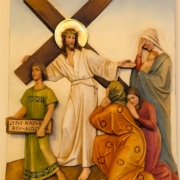
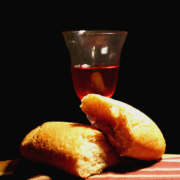
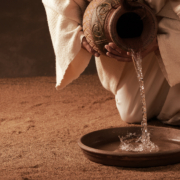 The Thursday in Holy Week. It is part of the Triduum, or three holy days before Easter. It comes from the Latin mandatum novum, “new commandment,” from Jn 13:34. The ceremony of washing feet was also referred to as “the Maundy.” Maundy Thursday celebrations also commemorate the institution of the eucharist by Jesus “on the night he was betrayed.” Egeria, a fourth-century pilgrim to Jerusalem, describes elaborate celebrations and observances in that city on Maundy Thursday. Special celebration of the institution of the eucharist on Maundy Thursday is attested by the Council of Hippo in 381. The Prayer Book liturgy for Maundy Thursday provides for celebration of the eucharist and a ceremony of the washing of feet which follows the gospel and homily. There is also provision for the consecration of the bread and wine for administering Holy Communion from the reserved sacrament on Good Friday. Following this, the altar is stripped and all decorative furnishings are removed from the church. (
The Thursday in Holy Week. It is part of the Triduum, or three holy days before Easter. It comes from the Latin mandatum novum, “new commandment,” from Jn 13:34. The ceremony of washing feet was also referred to as “the Maundy.” Maundy Thursday celebrations also commemorate the institution of the eucharist by Jesus “on the night he was betrayed.” Egeria, a fourth-century pilgrim to Jerusalem, describes elaborate celebrations and observances in that city on Maundy Thursday. Special celebration of the institution of the eucharist on Maundy Thursday is attested by the Council of Hippo in 381. The Prayer Book liturgy for Maundy Thursday provides for celebration of the eucharist and a ceremony of the washing of feet which follows the gospel and homily. There is also provision for the consecration of the bread and wine for administering Holy Communion from the reserved sacrament on Good Friday. Following this, the altar is stripped and all decorative furnishings are removed from the church. (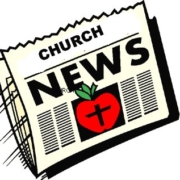
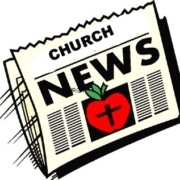 Only three more days left in Lent. For those of us quarantined in our homes, time “doesn’t fly,” to paraphrase the familiar quote. But in reality, what is time really? During Holy Week, we are not simply recalling some historic events which happened a long time ago in Jerusalem. Nor, under normal circumstances, do we re-enact a pageant with no meaning. The liturgical ceremonies which we would normally observe this week make us more aware of another world, an eternal kingdom of heaven, an unseen world of mystery where all things are being made new, and where we might be even more at home than we are in this world.
Only three more days left in Lent. For those of us quarantined in our homes, time “doesn’t fly,” to paraphrase the familiar quote. But in reality, what is time really? During Holy Week, we are not simply recalling some historic events which happened a long time ago in Jerusalem. Nor, under normal circumstances, do we re-enact a pageant with no meaning. The liturgical ceremonies which we would normally observe this week make us more aware of another world, an eternal kingdom of heaven, an unseen world of mystery where all things are being made new, and where we might be even more at home than we are in this world.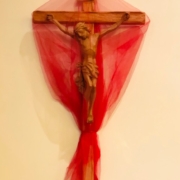
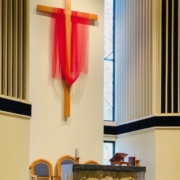 Enjoy this video of our Holy Eucharist celebration and Scriptures for the Day.
Enjoy this video of our Holy Eucharist celebration and Scriptures for the Day.